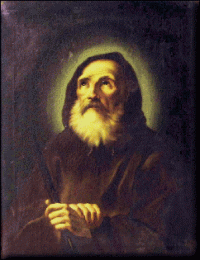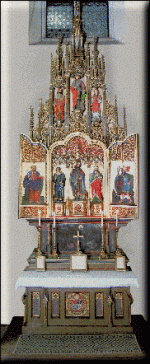Why and how to pray?
 The purpose of life is to grow in the likeness of God. Only if this purpose is fulfilled, can a man contemplate God and live with God in joy and peace. This is the only way to overcome death. To achieve this likeness to God, one has to be brought before the presence of God . This means that one has always to call oneself into the presence of God and correct one’s actions in accordance with this picture.
The purpose of life is to grow in the likeness of God. Only if this purpose is fulfilled, can a man contemplate God and live with God in joy and peace. This is the only way to overcome death. To achieve this likeness to God, one has to be brought before the presence of God . This means that one has always to call oneself into the presence of God and correct one’s actions in accordance with this picture.
The most beautiful and, at the same time most difficult, thing in life is to maintain true relationships. To live a life without relationships, i.e. with one’s attention focused on oneself alone, leads to the slow death of one’s personality and in the end is an offense against God. The key relationship that no one can or should avoid is a personal relationship to God. The meaning of prayer is maintaining and deepening this relationship from our side. The care of this relationship from God’s side is, in turn, called grace.
 The most actual expression of a living relationship is reverence for the others, i.e. God and his creation. The best way to express reverence for God is by means of the praise that we call liturgy. Liturgy, however, is not simply an external, public and common praise in religious services. It is, in a broader sense, the form of expression of our entire life. Our whole life is therefore to be conceived as liturgy. One cannot approach God in any other way than with undivided heart.
The most actual expression of a living relationship is reverence for the others, i.e. God and his creation. The best way to express reverence for God is by means of the praise that we call liturgy. Liturgy, however, is not simply an external, public and common praise in religious services. It is, in a broader sense, the form of expression of our entire life. Our whole life is therefore to be conceived as liturgy. One cannot approach God in any other way than with undivided heart.
The monastic tradition dealt in the first place with the instruction of the Gospel “to pray without ceasing.” When people understood this in a simplistic manner, they prayed in shifts without a break or they got rid of everything that was not public and obvious praise of God. Gradually monasticism adopted a deeper interpretation of the aforementioned instruction, which was accepted and acknowledged as the correct one by the church. According to this interpretation, incessant prayer means to interweave the common human activities frequently and suitably with profound ideas of God that finally the inner separation will disappear. To achieve this, the following means were developed in monasticism:
- Frequent regular prayer,
- Invocations (addressing God by means of a formula, in free moments),

- Lectio divina ("Seek while reading and you will find contemplation. Knock while praying and the door will be opened in contemplation").
There are common and private/personal prayers, like relationships. Why is common prayer so important? An old proverb says: “You go to heaven together, but everybody goes to hell alone .” Since the very beginning of the church, psalms have proved to be the most suitable means of common prayer,. The word “Psalm” comes from Hebrew and means roughly “hymn of praise”. Jesus himself prayed to his Father with psalms. Prayer with psalms is personal and common at the same time. It involves the entire creation, recalls redeeming events of the past and goes as far as the completion of time. It praises the as yet unfulfilled promises of God and awaits the Redeemer, who will bring the world to perfection. There are 150 psalms of the Holy Scriptures, in a book called the Psalter.
God’s word turns into the prayer of men in the Psalter.  While the other books of the Old Testament put the deeds of God into words and explain the mysteries contained in the works of God, with the Psalter man sings for God and the words of the Psalms express the redemptive actions of God . The Holy Spirit himself inspires the answers of man about the deeds of God. Christ combines both of them, i.e. divine deeds and prayer to God, and we learn in Him the way to pray with them.
While the other books of the Old Testament put the deeds of God into words and explain the mysteries contained in the works of God, with the Psalter man sings for God and the words of the Psalms express the redemptive actions of God . The Holy Spirit himself inspires the answers of man about the deeds of God. Christ combines both of them, i.e. divine deeds and prayer to God, and we learn in Him the way to pray with them.
